
|   |

|   |
Deśi-Mārga-Aḍavu - Arjun Bharadwaj e-mail: arjunbharadwaj@gmail.com Photos courtesy: Abhinava Dance Company May 7, 2021 On the 18th of April 2021, the world of dance witnessed the virtual launch of the Deśi-Mārga-Aḍavu - a research-based innovation by Nirupama Rajendra, one of the foremost exponents of Bharatanrityam and Kathak. The practitioners of Bharatanatyam undergo training in various aḍavus, which constitute the deśī aspect of the research. The karaṇas, cārīs and nṛttahastas of the Nāṭyaśāstra as reconstructed by Dr. Padma Subrahmanyam constitute the mārga, i.e., the universal set of movements realised by the Sage Bharata. The Deśi-Mārga-Aḍavus (referred to as DMA henceforth) are designed to work as pedagogical bridges between the deśī of the Bharatanatyam and the mārga of the Nāṭyaśāstra. In other words, it helps link the local to the global, the particular to the universal. It also adds beauty to expression and is like adding newer phrases to the vocabulary of a language, enriching and easing its potential for communication. It is like giving hitherto unknown raw materials for the preparation of a tasty dish. The DMA, thus, adds beauty and variety to both nṛtta and abhinaya. 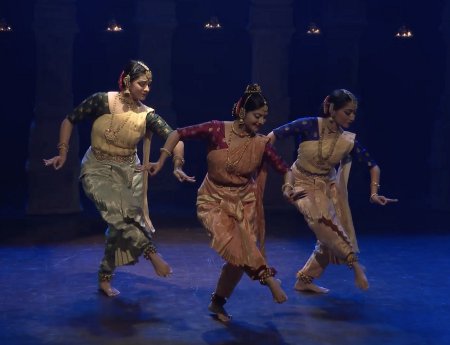
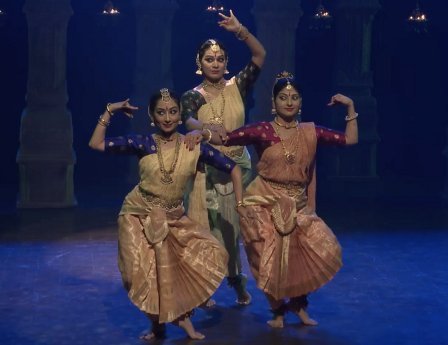
Nirupama Rajendra, with her intense training in mārga under Late Guru Sundari Santhanam and years of experience in applying the mārga-karaṇas in both solo and group productions, conceived these new set of hundred and eight movements in April 2020 and she continued with documenting these movements in book and video format, the process of which completed its full arc in February 2021. Inspired by Shatavadhani Dr. R Ganesh, who has been her mentor and guide since the early stages of her artistic career, Nirupama took up the task of linking the deśī with the mārga. The DMA is designed such that the lower body performs the movements of the traditional aḍavus and the upper body integrates nṛtta-hastas to give rise to the Deśī-Mārga-Aḍavus. In the words of Dr. Ganesh, the DMA is akin to Kṛṣṇa tattva coming down to Gokula and blending with its surroundings. He observes that it is one of the paths that accelerate the merging of the deśī-river with the mārga-ocean. Dr. Padma Subrahmanyam, who released the documentation of DMA, also recommended this as one of the much needed steps in understanding, learning and experiencing the art of Bharata better. The launch event involved showcasing of excerpts from the DMA documentation which was shot at the freshly reconstructed Venugopalaswamy Temple in Mysore. This was followed by demonstration of the traditional aḍavus in parallel with the DMA. For instance, the traditional Nāṭṭaḍavu has inspired the creation of six DMAs and the Muktāya-aḍavu has inspired ten varieties of DMA. The DMAs were named by Dr. R Ganesh in accordance with their flavour and application. The very first variety based on Nāṭṭaḍavu blended with the Latā-hasta is called Ḍolikā and the name in line with the sway that naturally comes as a part of the movement. Another movement based on the Jāraḍavu blended with Ulbaṇa is called Cāmarikā and the name is in accordance with its application - fanning a Cāmara. Through the demonstration, the audience got a taste of the thought process and the aesthetics behind the creation of several of the DMA. While Nirupama explained the process, her senior disciples demonstrated the movements. The transition of linear and geometric movements into curvilinear ones was evident to all the artistes and connoisseurs in the audience. The lower body gives strength and the upper body adds grace to the movement. The launch event was not merely limited to showcasing the grammar of DMA. It also had Nirupama Rajendra demonstrating its application accompanied by Anuradha Vikranth, Director of Drishti Art Centre and Sneha Devanandan, Director of Kalaanidhi Nruthya Mandiram. The artistes are, in various capacities, the students of Nirupama and have also learnt the DMA under her guidance. The dances also featured the Abhinava ensemble -Indu Ramdas, Smruthi Vishwanath, Savithri Shastry, Sanjana Ravi, Rohini Jayaram, Medhavini Varakhedi, Harinishri BT and Sanchita Shenoy. 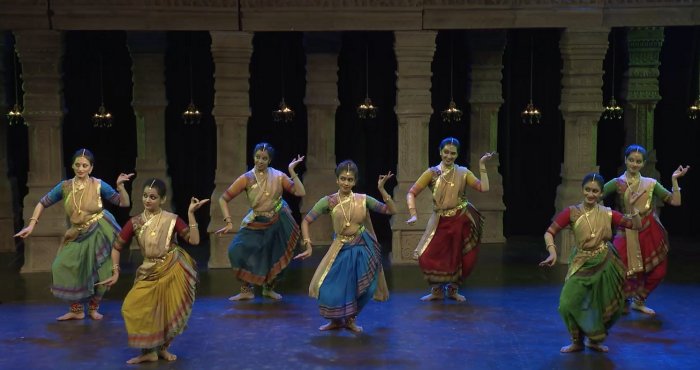 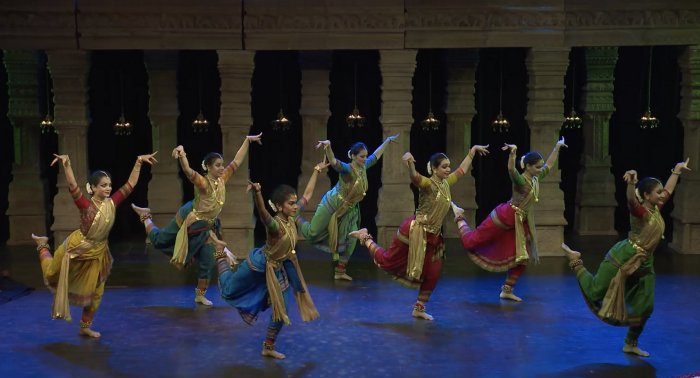 A poem in Sanskrit and Kannada - a combination of mārga and deśī languages was penned by Dr. R Ganesh for the occasion. The composition poetically brings together various features of DMA and also suggestively embodies the names Padma, Sundari and Nirupama - the Guru-shishya parampara. Choreographed by Nirupama, the presentation creatively employed the movements of DMA like Khelanikā, Mukulikā, Sammohanikā, Vitānikā, Kalāpikā, Jhoṭikā, Parāvartikā, Harṣikā, Āviṣkṛti, Sadarpaṇikā, and others which were performed to Mohana Raaga composed by T V Gopalakrishnan. These together with a live music ensemble featuring Raghuram R on vocal, Mahesha Swamy on flute and Lingaraju on mridangam brought the abstract concept alive. A thillana in the raga Vasanta was presented by the group of artistes. The thillana involved the concept of dohada and a traditional verse suggesting the manner in which different trees and plants blossom. In India, it is believed that different trees blossom when they are given different kinds of treatment, filled with love, by young girls dressed up beautifully. Some of the DMA movements employed in Vasanta thillana were Cāmarikā, Pallavikā, Svastika-ma˝jarikā, Abhimānikā, Kusumapālikā, Avalepikā and Dantāvalikā. Praveen D Rao, who directed the music, spoke about his approach in designing melodies for the movements. He said that the vocals and the instruments employed, the movement of the notes were all set in accordance with the movements. It is akin to music helping in amplifying the nuances of the movements. Ranjini Vasuki, Varijashree Venugopal and Raghuram have rendered their voices and creativity for the work. 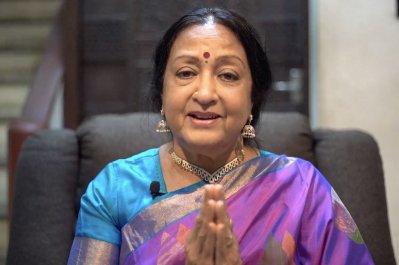 Dr. Padma Subrahmanyam 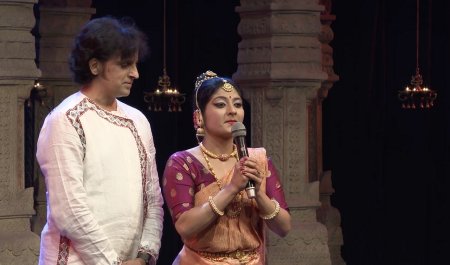 Rajendra & Nirupama The icing on the cake was the concluding talk by Dr. Padma Subrahmanyam who expressed her heartfelt appreciation for Nirupama, Rajendra and the team and also to Dr. Ganesh for initiating the idea and naming the movements aesthetically. She also stressed on the fact that it is important for students of dance to learn these movements directly from the guru and not pick it up from sources lacking credibility. She invited the dance community to make the best use of the Deśī-Mārga-Aḍavus which can not only be a part of pedagogy, but will add immense value to their abhinaya in particular and dance in general. The event was video documented at Prabhath Kaladwaraka, Koramangala and was efficiently compered by Hari Ravikumar, a scholar and musician. The videos of the DMA are made available through an online portal, along with a manual to guide the students of dance through the movements. Modules for learning DMA are also being offered to Bharatanatyam dancers who have had prior foundation training. More information can be procured at dma.abhinava.dance Or email to dma@abhinavadancecompany.com / Or call +91 93432 16765 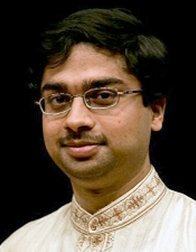 Arjun Bharadwaj is a scholar, writer, translator, engineer, and composes poems. He is well-versed in Sanskrit, Kannada, English, Greek, and German languages. His research interests lie in comparative aesthetics of classical Greek and Sanskrit literature. He has deep interest in the theatre arts and music. Arjun has (co-) translated the works of AR Krishna Shastri, DV Gundappa, Dr. SL Bhyrappa, Dr. SR Ramaswamy and Shatavadhani Dr. R Ganesh. |